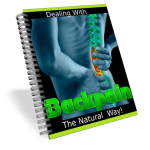
Anti-Inflation Protocol
CONTENT
Introduction
Chapter 1: What is inflammation?
Chapter 2: How inflammation affects everything
How inflammation affects our body:
Chapter 3: Anti-inflammation strategies
Strategy #1: Switch out inflammation-inducing foods for anti- inflammatory ones
Inflammatory Foods to AVOID:
Anti-Inflammatory Foods to EAT MORE OF:
Cherry Coconut Porridge
Mediterranean Tuna Salad
Pan-baked Lemon Herb Salmon and Zucchini
Strategy #2: A little exercise goes a long way
50 Sit-ups
40 Jump squats
30 Push-ups
Strategy #3: Soothing the symptoms
Olive oil
Castor oil
Lavender oil
Conclusion
INTRODUCTION
Do you suffer from aching joints or muscles?
Is your skin red or itchy a lot of the time?
Are you struggling with shedding off those extra pounds?
Or perhaps you just feel easily fatigued on most days… like there’s never enough rest.
If you answered yes to any of those questions, it’s highly likely you’re experiencing chronic inflammation. Inflammation is the new buzzword and there’s a reason why it’s on the lips of scientists, doctors, and even holistic health practitioners nowadays—it’s something that all three groups are agreeing on, finally! What’s scary about inflammation is that it’s insidious. You never know if you have inflammation until it makes the symptoms known.
By then, it’s too late and inflammation is in full-blown mode. Many research studies have now deduced that most—if not all—chronic illnesses stem from inflammation. So, if inflammation has made itself known, you probably have high blood pressure, diabetes, or even heart disease, to say the least.
Even if you aren’t diagnosed with those illnesses, if you’re experiencing any of the symptoms that I’ve mentioned at the start, it’ll do you a world of good to pay attention to what this book is about. This book’s aim is to educate everyone on the dangers of chronic inflammation, and how you can eradicate it without any drugs or injections. After all, doctors aren’t trained to treat inflammation at its root; they’re just trained to stop the symptoms.
Now, you’ve probably gathered that chronic inflammation is inherently bad for you. But you may be surprised to know that acute inflammation is actually something that you need!
It’s necessary for our survival. Chapter 1 gets in depth about this. Chapter 2 goes on to elaborate why chronic inflammation is bad for us. From your head to your toes, you’ll come to realize that not a single area of your body is free from being the target of inflammation.
To make sure you don’t become a victim of inflammation, or if you’re already suffering from it, Chapters 3 & 4 talk about how you can combat it by changing your diet and exercise regime. Easy, delicious recipes are included to help you jump-start your anti-inflammatory lifestyle.
Before you think that eating healthy and exercising wil immediately land you in the inflammation-free zone, it won’t.
Conquering inflammation doesn’t happen in a day or two. It takes consistent effort over time to reap the benefits of having reduced levels of inflammation.
However, if you feel like you’re already deep in the trenches of inflammation, there’s a little-known way to actually speed up your recovery from it. As I’ve said, diet and exercise are great, but they take time and effort. Perhaps you’re looking for a quick, all-natural solution to the unwanted symptoms of inflammation—like hair loss—instead.
Click here to find out how you can swiftly nip it in the bud and reverse its damages to your cells.
Let’s read on to get started on your journey to an inflammation-free life.
CHAPTER 1:
What is inflammation?
You might’ve heard the term “inflammation” or “inflamed” thrown around. But maybe you’re not entirely sure don’t know what it is. What’s all this hype about anyway? Here’s a quick scientific definition to help you understand inflammation: It’s a process where your white blood cells attack foreign organisms to protect your body. Essentially, it’s your immune system declaring war on the bad guys (like bacteria and viruses).
That sounds like a good thing, doesn’t it? We have a built-in defense mechanism that protects us from harmful invaders. But too much of a good thing can become bad. You see, your immune system can’t be 100% right all the time. Sometimes, it mistakenly identifies your own organs as a foreign object and before you know it, your organs are under fire.
This is the key difference between acute and chronic inflammation.
Acute inflammation happens when your white blood cells are attacking alien organisms—the bad guys that I mentioned earlier.
This is “good” inflammation because it’s necessary to keep your body healthy and functioning normally. When the infection/illness is gone, your inflammation dissipates as well. It’s temporary.
For example, during allergy season, it’s common for inflammation to occur. Your immune system detects the pollen as alien objects and your defensive mechanism kicks in. That’s how sneezes, itchiness, and swelling happen.
When the pollen is removed from your surroundings, your allergic reactions will naturally stop.
However, chronic inflammation is another story altogether. It happens when your immune system goes a little haywire and launches an attack on your innocent organs.
The thing is, because your organs are now mistakenly targeted, the attack on your organs will not cease. Meaning given enough time, your vulnerable organs stand no chance at surviving.
Arthritis is a classic example of chronic inflammation. Your joints are under attack by your immune system and because of that, it’s common to feel pain whenever you move. If you have arthritis, you know how stubborn the pain is—that’s chronic inflammation at work.
There are a hundred and other reasons triggers for acute and chronic inflammation. They range from allergies to injuries (for acute inflammation) and auto-immune disorders to hormone fluctuations (for chronic inflammation).
Though the cause of inflammation may be difficult to pinpoint, the symptoms of inflammation are rather easy to spot. Swelling, redness, pain, fever and fatigue are common manifestations. If you ever had a fever or an infected cut, these symptoms are common and tell you that inflammation is at work.
Whenever you have a cut/bump, your immune system detects that its defenses have been breached. Your immune system releases its soldiers – chemicals from your white blood cells – into the bloodstream and to the affected tissues. Because of the increased blood flow to the area of injury/infection, your skin appears red and warm to the touch. Bet you experienced those when you accidentally bumped your toe on the edge of the couch or when you had a little cut on your finger!
Another beacon signalling that inflammation is at work is pain. So how does pain come into the picture? When the above process happens, it stimulates your nerves, which translates into pain.
It can sometimes manifest as a slight twinge or irritation, then slowly evolve into a cramp or ache, before manifesting itself fully in the form of a burning sensation or agony.
That’s why regardless of acute or chronic inflammation, pain is inevitable. However, if you’re suffering from chronic inflammation, the pain you experience is unnecessary – I mean, there’s no enemy to defeat; just your innocent organs. You might ask, “So, what if I have inflammation?”
If you’re experiencing acute inflammation, then I’d say: good for you! Your body’s functioning normally and protecting you from potential harm. But, if aches and pain are making themselves known all over your body – head, joints and muscles – and nothing you seem to do can relieve the pain, then beware! It’s likely that chronic inflammation is at work.
Other than its ability to inflict constant pain, chronic inflammation is also a harbinger for other health complications. Think heart diseases, arthritis and the big C – cancer. Let’s go on to Chapter 2 find out more about the many complications of inflammation.
CHAPTER 2:
How Inflammation Affects Everything
Inflammation in a controlled setting is great for the body. But when it goes out of control, your entire body suffers – from your head to your toes. Known as the ‘silent killer’, inflammation is usually present for years before it becomes apparent and big enough a problem to warrant a trip to the doctor.
You’d be surprised to know that the development of chronic illnesses like heart disease and arthritis are, fundamentally, due to inflammation. It’s terrifying to find out that such serious conditions are mere complications arising from inflammation – something that’s easily preventable, but so many of us are painfully unaware until it becomes too late.
How Inflammation Affects Our Body :
If you think that creaky joints and pain come together with old age, you are wrong! Inflammation in your joints – be it your feet, knees or hands – is a big problem. One such example is rheumatoid arthritis.
It’s a painful swelling that results in bone erosion and joint deformation. It’s common for the elderly. If you’re in your fifties or above, you sure don’t want that, do you?
Do you know that most of your body’s immune cells gather around your 2 GUT intestines? Though your gut contains lots of bacteria (that’s healthy and necessary for your gut health), your immune system knows they’re untouchable. But sometimes, your immune system forgets that and starts to react to the bacteria, which results in chronic inflammation.
When this happens, irritable bowel syndrome and other gut diseases may result. Stress becomes a common trigger for gut inflammation which can easily upset your stomach.
If you think asthma or breathing difficulties only happen to children, then 3 LUNGS you’re in for a big surprise. Many adults, especially when they reach their 50s, tend to be more vulnerable to inflammation of the lungs.This can result in chronic obstructive pulmonary disease (COPD) and adult-onset asthma, both of which essentially makes normal breathing extremely challenging.
If you think inflammation only happens to large organs, then you’re mistaken!
4 HEART Inflammation can also occur in your blood vessels. With fats deposited in your arterial walls, they gain the ability to attract white blood cells, causing a larger blockage. Sooner or later, it becomes a blood clot which may eventually cause heart attack.
Your brain is also vulnerable to inflammation. When inflamed, it’s common 5 BRAIN to experience moodiness and a lack of appetite. A 2015 study by JAMA Psychiatry also showed that insomnia is inevitable when your brain is affected by inflammation.
A study published in the Journal of Endocrinology showed that inflammation 6 BONES suppresses bone growth and even encourage bone loss. Gasp! That osteoporosis diagnosis you got might be the result of inflammation.
Any damage to your bone is repaired and replaced by your body naturally.
However, inflammation may interrupt this natural process which causes your damaged bones to remain as it is. This is how brittle bones are formed.
Do you remember how inflammation can affect your gut? If your gut is constantly under attack, it probably isn’t able to effectively absorb nutrients that are essential for bone health – or your overall well-being for that matter.
Other than affecting your body internally, inflammation can also happen 7 SKIN externally. Your skin is the largest organ and inflammation can happen there as well. For example, psoriasis is a skin condition where your immune system stimulates the rapid growth of your skin cells – they can multiply up to 10 times faster than normal!
Before you mistake this as some sort of special regenerative ability, it’s not.
Red bumps, covered with loose, silver-colored scales can appear all over your skin, and cause itchiness, burning, or soreness. It can even affect your joints and make them stiff and swollen!
Last by not least, your head, or more specifically your hair follicles, are also 8 HEAD potential targets for inflammation.
In certain auto-immune diseases, your hair follicles are mistakenly attacked by your white blood cells which result in your hair falling out.
Or in other cases, your scalp might be secreting too much sebum, causing your hair follicles to be blocked and inflamed. In short, the 101 reasons for hair loss all lead to the dreadful outcome of losing your precious locks.
Anyone who has suffered from hair loss knows that it’s a terrible thing to go through. Yes, it may be the least life-threatening condition, but it sure carves a big dent in your self-confidence.
If the root of the problem isn’t solved – A.K.A. inflammation – there’s no way to cure such complications because they’d just keep coming back.
CHAPTER 3:
Anti-Inflammation Strategies
If you’ve went to your doctor complaining of pain, I bet you were prescribed with medications like non-steroidal anti-inflammatory drugs (NSAIDs) and simple painkillers like ibuprofen and aspirin.
These medications may prove effective at first, but over time, your body tends to build a resistance against them, which forces you to increase your dosage. You want to be careful here because it’s a slippery slope down substance abuse.
Plus, these medications aren’t as innocent as they seem. They come with common side effects like nausea and vomiting, diarrhea or constipation, and in serious cases can result in kidney and liver failure as well. Take note: Some individuals might be allergic to NSAIDs so if you happen to feel breathless when consuming them, stop!
If those points haven’t convinced you to reduce your reliance on anti-inflammatory medications, here’s another big reason why you should.
Mother Nature has provided powerful and natural foods that can help us combat inflammation – in a way that doesn’t harm us with terrible side effects.
Dr. Frank Hu, a professor in the Department of Nutrition at the Harvard School of Public Health, said that many experimental studies they did proved that foods and certain beverages indeed contain anti-inflammatory benefits.
Avoid certain foods and eat what’s good for you – that’s the right way to fight inflammation.
The next time you intend to head to the pharmacy, you can consider popping by the grocery store instead.
Strategy #1:
SWITCH OUT INFLAMMATION-INDUCING FOODS FOR ANTI-INFLAMMATORY ONES
Here’s a list of foods you want to cut down on or avoid, because they encourage inflammation. It just so happens that these foods are foods that you already want to avoid because they’re usually refined and processed (read: bad for your health!). So, inflammation is just another reason for you to throw those foods out your window. Now.
INFLAMMATORY FOODS TO AVOID:
1. Refined carbohydrates
Refined carbohydrates is just a big word for white bread, white flour and white rice. The natural fibers of wheat and rice have been stripped away (which explains the white color) resulting in these carbohydrates being easily absorbed by the body. Sounds like a good thing but it’s not! It spikes your blood sugar levels and can easily cause your hormone (insulin) levels to fluctuate.
And that is the signal for inflammation to start.
2. Sugar/sweets
Just like refined carbohydrates, foods that contain lots of sugar – cakes, cookies, muffins and the like – get absorbed by the body fast. And this leads to rising blood sugar levels that are mirrored by your insulin levels. And before you know it, inflammation is hot on your tail.
It’s no surprise that sugary foods cause weight gain. But did you know that weight gain increases the risk for inflammation? Sugary foods are a double whammy!
3. Processed food
Processed food essentially strips food of its nutrients and replaces it with lots of sugar and unhealthy fats. Eat them and you’re introducing unhealthy food that does absolutely nothing for your body. Not only does your body not receive the nutrients it needs, these processed foods are a hotbed for inflammation to occur.
Removing such foods from your diet is the first step to fighting inflammation. What’s next then?
Replacing pro-inflammatory foods with anti-inflammatory foods! Anti-inflammatory foods help to reverse inflammation instead of just stopping it.
ANTI-INFLAMMATORY FOODS TO EAT MORE OF:
1. Dark leafy greens
Dark green vegetables like spinach, collard greens, and kale are great sources of nutrients. Not only do they have Vitamin E, which is essential in protecting the body from pro-inflammatory molecules called cytokines, they are also a great source of other nutrients like calcium, iron, and flavonoids. Opt for a quick blanch or stir-fry to retain as much nutrients as possible while cooking. Alternatively, a green juice or smoothie works wonders as well.
2. Fatty fish
Fatty fish sounds exactly like the thing you want to avoid having in your diet. But these fats – omega-3 fatty acids – are beneficial for your body. In a 2009 study, men who consumed the most omega-3 fatty acids were able to reduce their risk of cardiovascular disease by 23%!
While it’s important to include such fishes in your diet, it’s even more important to prepare your fish properly. Try baking or grilling your fish as opposed to frying or salting them.
If you don’t like fish, you can opt for omega-3 fish oil supplements. But if possible, try to consume fish instead of supplements because fishes contain more than just omega-3 fatty acids. They are a great source of minerals and protein as well.
3. Extra-virgin olive oil
Healthy plant-based fats are great for inflammation and your heart health. Olive oil contains lots of Vitamin E which is essential in fighting against inflammation. There’s also another compound in olive oil that really does wonders for inflammation.
That compound is known as oleocanthal. Oleocanthal in olive oil has the EXACT same anti-inflammatory response in our body as the NSAID ibuprofen. Meaning, olive oil is the equivalent of natural, and not to mention a cheaper alternative to ibuprofen. Think about it! All the effects of ibuprofen, minus the side effects.
4. Fruits
Fruits are amazing at battling inflammation. Berries are especially great because they have anthocyanins, an antioxidant flavonoid that gives berries their dark and vivid color. Also high in polyphenols, berries help protect your body against inflammation.
It’s also worth mentioning that tart (or sour) cherries are the known to have the “highest anti-inflammatory content of any food” according to a 2012 presentation by Oregon Health and Science University scientists. Their research has shown that tart cherry juice powder reduced inflammation in blood vessels by up to 50% in lab mice.
But, the key word in tart cherries being tart implies that the sweet ones don’t yield the same effects. Know the difference!
It’s great to know what kind of foods are anti-inflammatory, but if you’re still hesitant and not sure where to start, I feel you. To ease your first foray into the world of anti-inflammatory foods, here are three simple yet delicious meal featuring ingredients mentioned above.
Cherry Coconut Porridge
For a great morning treat, here’s a bowl of cherry coconut porridge to help you kickstart the day.
Here’s what you need:
1.5 cups oats
4 tablespoons chia seed
3-4 cups of coconut milk (for drinking)
3 tablespoons of raw cacao
A pinch of stevia
Some coconut shavings
Handful of cherries (fresh or frozen)
Some dark chocolate shavings
A drizzle of maple syrup (optional)
Once you’ve prepped your ingredients, here’s what you need to do.
1. Pour the oats, chia, coconut milk, cacao and stevia in a pan and bring it to boil over medium heat.
2. Then, simmer the ingredients over low heat till the oats are cooked.
3. Transfer the oats in a bowl and garnish with coconut and dark chocolate shavings (yum!), cherries and maple syrup to taste.
Note: Oats are unrefined carbohydrates that help keep your energy level high throughout the day. By keeping your blood sugar level steady, they prevent hormone imbalance and keep inflammation at bay. Tart cherries contain the powerful antioxidant, anthocyanin, which also helps to cut down inflammation.
Mediterranean Tuna Salad
For your midday fuel, here’s a hearty yet light bowl of Mediterranean Tuna Salad. It works wonderfully well when you pair it with slices of whole meal bread or crackers. If not, eating it alone with a tomato or salad works as well!
Here’s what you need:
2.5oz cans tuna packed in water
1/4 cup chopped Kalamata or mixed olives
2 Tablespoons minced red onion
2 Tablespoons chopped fire roasted red peppers
2 Tablespoons chopped fresh basil
1 Tablespoon capers
1/4 cup olive oil mayonnaise
1 Tablespoon lemon juice, salt, and pepper
Once you gotten that done, here’s onto the fun part!
All you need to do is to add all the ingredients
1. in a large bowl and mix. Mix till everything is combined well.
2. Serve it with some bread/pita/crackers for an added carbohydrate boost or with a handful of fresh garden green if you’re looking for more fiber.
Note: Tuna is a type of cold-water fish that contains the much raved about omega-3 fatty acids.
Packed with proteins, it makes sure you feel and stay full all the way till teatime or dinner! The olive oil based mayonnaise is another healthier (and delicious) alternative to plain ‘ole mayo. Not only is it healthier, it also contains oleocanthal that has pain-relief benefits like that of ibuprofen.
Pan-baked Lemon Herb Salmon and Zucchini
Here’s what you need:
4 zucchini, chopped
2 tablespoons olive oil
Kosher salt and freshly ground black pepper, to taste
For the salmon:
2 tablespoons brown sugar, packed
2 tablespoons freshly squeezed lemon juice
1 tablespoon Dijon mustard
2 cloves garlic, minced
1/2 teaspoon dried dill
1/2 teaspoon dried oregano
1/4 teaspoon dried thyme
1/4 teaspoon dried rosemary
Kosher salt and freshly ground black pepper, to taste
4 (5-ounce) salmon fillets
2 tablespoons chopped fresh parsley leaves
Here’s what you need to do:
1. First, preheat the oven to 400 degrees.
2. Mix the brown sugar, lemon juice, Dijon, garlic, dill, oregano, thyme and rosemary together and season it with salt and pepper to taste.
This will be your herb mixture.
3. Lightly oil a baking sheet and place the zucchini in a single layer on it. Drizzle it with olive oil and season it with salt and pepper to taste.
Then layer on the salmon and brush the salmon with the herb mixture.
4. Pop the tray into the oven and cook till the salmon done. This will take approximately 15-20 minutes.
5. Once it’s cooked, serve the salmon on a plate and garnish it with parsley if you so desire.
6. Note: Salmon is another great source of omega-3 fatty acids and proteins. Baking the salmon is a healthier cooking method than pan-frying it. This recipe uses lots of herbs, which gives this dish an extra flavor boost so you can cut back on the salt.
Strategy #2:
A LITTLE EXERCISE GOES A LONG WAY
Eating nutritious food gives you a good head start when fighting inflammation. But exercise is something you cannot run away from. Relying solely on a healthy diet is simply not enough to combat raging chronic inflammation! Physical activity is essential for your body to reap the maximum benefits from the foods you eat.
But before you sign up for the nearest gym, it’s important to know what physical activity actually entails. It’s not about running on treadmills, lifting weights, or being an expert swimmer. What you do outside the gyms is important as well, if not more so.
Did you know that the average American adult spends approximately 10 hours sitting? We are spending almost half the day in a chair. Such inactivity is bad for your health! If you try to justify it by going for a 60-minute workout every day, I’m sorry to break your bubble—it’s just not enough.
You need near-continuous movement throughout the day—meaning that you should move every 50 minutes or so. The next thing to keep in mind is to rack up your steps for the pedometer.
Walk more! A good start would be 7000-10,000 steps daily. It sounds like a lot, but it’s really easy.
Instead of taking the elevator, try climbing some stairs.
Alternatively, you can take a circuitous route back home to work up a nice, light sweat.
If you’ve been leading a sedentary lifestyle or you’re unable to do vigorous workouts, making sure you don’t sit for too long and just walking is an extremely easy yet effective way to get your heart pumping. But walking for 7 days a week can get a little boring. If you need variety, here’s an alternative for you. Often known as HIIT, its full name is high-intensity interval training.
Sounds demanding? It is.
50 SIT-UPS
How to do it: Lie on your back with your feet on the floor, knees bent. With your palms intercrossed behind your head, tighten your abs and pull your head and back off the ground. When you’re sitting upright, slowly lie back down using your abs to control the speed. When you’re back to the start position, you’ve finished 1 sit-up. Repeat for 50 times to complete this set.
40 JUMP SQUATS
How to do it: Stand with your feet shoulder-width apart, arms at your side. If you’ve heard this term countless times but still don’t understand what it means, here’s a little tip – just make sure each foot is below the outside of your shoulders. This position should feel stable and you shouldn’t be toppling over with just a push.
Once you’re in the correct position, bend your knees – make sure you can see your feet even after bending your knees. Once your knees are bent, jump and land back in the same position, with your knees bent.
And that’s how you perform a jump squat.
Repeat for 40 times to complete this set.
30 PUSH-UPS
How to do it: With your palms (shoulder width apart) and feet (hip width apart) supporting your entire body weight, bend your elbows. Make sure your elbows are tucked against your sides. When going down, ensure your body is in a straight line.
Your butt shouldn’t be pointing upwards nor should your hips be touching the floor before your chest does. Once you’re as close to the floor as you possibly can, use your arm muscles to push yourself off the floor back to the starting position. And there you have it, a push-up! Do it 30 times to finish this set.
By exercising, not only are you paving the way for your body to access the anti-inflammatory benefits exercise offers, but you’re also on your way to a toned and leaner body.
A word of warning though, the anti-inflammatory benefits of exercises will be negated if your diet still consists of pro-inflammatory foods. There’s no way you can beat inflammation through diet or exercise only. The best way to do it is to combine both exercise and diet.
Doing so will ensure you’d be inflammation-free in no time!
Strategy #3:
SOOTHING THE SYMPTOMS
Olive oil
If you remember, olive oil – especially extra virgin olive oil – is one of the anti-inflammatory foods that I recommended. If you purchased bottles of olive oil, you’ll be glad to know that there are other uses for it as well. Though slightly more expensive, olive oil is one of the most effective herbal oils that’s able to penetrate the hair shaft compared to other oils.
If possible, try to use extra-virgin olive oil. Not only is it moisturizing, it also contains a huge dollop of Vitamin E and monounsaturated fats that help to prevent hair loss by reducing inflammation at the scalp. For the best benefits of olive hair oil, warm up the olive oil before massaging it into your hair and scalp. Take your time to make sure every inch is covered! When it’s done, leave it on for 30-45 minutes before washing it out with a mild shampoo.
If you’re suffering from pain, you’d be glad to know that olive oil can help with that as well.
Oleocanthal, a compound found in olive oil, helps inhibit inflammation causing enzymes – like how NSAIDs (e.g. ibuprofen and aspirin) works. Research has shown that to unlock 10% of ibuprofen’s pain relief properties, all you need is to take 50g of olive oil daily.
Castor oil
Castor oil is often considered as an effective remedy against hair loss. Packed with anti-inflammatory, anti-bacterial, anti-fungal properties and a good dose of vitamin E, castor oil has some powerful anti-inflammatory benefits. If you find that the castor oil you have is a little too thick for your liking, you can thin it out by adding coconut or olive oil to it.
When the castor oil has the consistency that you’re satisfied with, spread some of it on your palms and massage it into your scalp. Make sure your hair strands are also coated with it!
Keep it on for 1-2 hours and rinse it out with water. You can do it daily or thrice a week, depending on your schedule and preference.
It’s also great for joint pain relief – this is great news if you’re suffering from arthritis. The high concentration of ricinoleic acid present in castor oil is said to be the reason why it’s great for fighting inflammation and pain.
A clinical trial published its research findings in the International Quarterly Journal of Research in Ayurveda (AYU) where it showed that i a 15-day study, patients who were treated with 30-40ml of castor oil with hot water reported pain in the joints decreased by more than 50%.
Simply massage the affected areas with castor oil and leave it on overnight.
Lavender oil
A 4-in-1 herbal oil, lavender oil is anti-inflammatory, antibacterial, antifungal and antiseptic all at once. Therefore, it’s super effective in not only treating hair loss but also other hair scalp ailments.
Not only does it boost blood circulation at your scalp, it also monitors the oil production of your scalp to ensure there isn’t any over-production of sebum.
You can make your own lavender oil by submerging sprigs of lavender into olive oil. Keep it in a dark and cool place or a month or so and – ta-dah! – you have your own batch of homemade lavender oil. Massage some of the oil on your scalp and leave it overnight.
Wash it away the next morning with a gentle shampoo. Do it daily and you should be able to see the effects of lavender oil. A 2015 study also showed that when lavender oil was applied to patients, it acts as a relaxant and as an analgesic. In fact, when used in an acupressure treatments, it helped reduce lower back pains by 39%.
Inhaling or massaging lavender oil over the affected area is a great way to alleviate the pain.
Hair oils are a great way to nourish and condition your hair. But if you’re hoping that they would promote hair growth, you’d have to look for another solution. Hair oils don’t do that.
Instead, click here to check out this au-naturel answer to your inflammation-induced hair loss. It’s filled with minerals and vitamins that are bound to boost hair growth, because it targets the root of your problems—inflammation.
CONCLUSION
If you’re at this section, you should know by now that there are 2 types of inflammation – acute and chronic. Inflammation is an innate defense mechanism that our body has. It’s vital for our survival. That’s how we defend ourselves against infections and injury.
Now to be clear, acute inflammation is good. Chronic inflammation is not—in fact, it’s the worst.
With your own immune system turning against your own body, you can be sure that your organs and tissues won’t escape the onslaught unscathed. In fact, it’s known that inflammation is the underlying cause of many chronic illnesses like high blood pressure, diabetes, and heart disease.
So it’s high time to examine your diet and exercise regime (if any). Foods can be classified into 2 types generally – anti or pro-inflammatory foods. Coincidentally or not, many of the foods we should avoid – like processed, sugary and fried foods – are those that are pro-inflammatory.
In contrast, fresh produce like dark green, leafy vegetables, whole grain products, and fruits are anti-inflammatory. And that’s all due to the vitamins, minerals and fibers in them. Since processed food are stripped of such nutrients, it’s no wonder they are pro-inflammatory.
If you think that healthy food = nasty-tasting food, you couldn’t be more wrong.
This book has included 3 delicious and easy recipes to keep you covered for the day – healthy meals throughout the day are possible! If you’re finding it difficult to revamp your eating habits, don’t fret! Just start by changing 1 meal a day. My recommendation would be to start off with breakfast – after all, it’s the most important meal of the day.
And what’s better than starting the day off right with a healthy and good breakfast?
When you’re used to eating clean at least once a day, you can start changing your lunch and dinner choices. Slowly but surely, your diet will transform from pro-inflammatory to anti-inflammatory.
It’s not rocket science – it’s just all about choice and commitment.
While changing your diet, you must also make the effort to be more active (if you’re already aren’t). This is important because exercising contains anti-inflammatory benefits that help keep chronic inflammation at bay.
If you’re guilty of leading a sedentary lifestyle, it’s time to change. You’ve probably heard it from doctors all the time and you probably know deep down in your heart that exercise is important.
And it is! In fact, research has shown that exercise is a great preventive and moderator for many illnesses.
If you’ve made the decision to change but you’re still unsure about how to go about doing it, just remember this. A mix of aerobic and anaerobic exercises will help you maximize the benefits of exercise. Not to mention, it keeps your workout fun and varied. The worst thing you want to happen is to be bored of your workout routine. If you’re bored, you soon won’t be bothered to exercise.
You want to make sure you couple an anti-inflammatory diet with exercise because they go hand-in-hand in fighting inflammation. You can be exercising but if you’re still eating pizzas or frozen dinners with desserts, these pro-inflammatory foods are going to negate all the effort you spend exercising. Not worth it, right?
If you are eating right, then it makes more sense to exercise to maximize the health benefits of your diet. Because why say no to a more efficient and effective combination?
If you’re suffering from inflammation and the pain is preventing you from leading the life you want, it’s time to change your lifestyle. Eat healthy, keep active and stay inflammation-free!
Share this content:
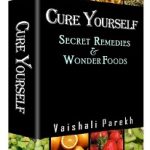

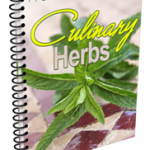
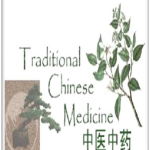






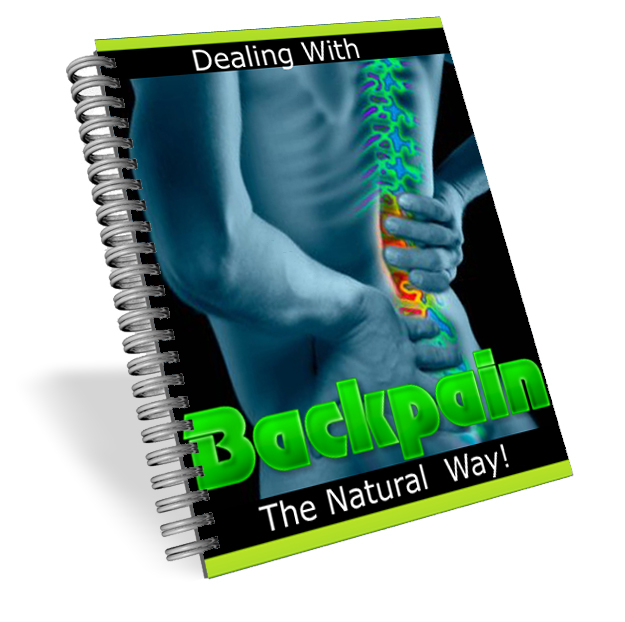


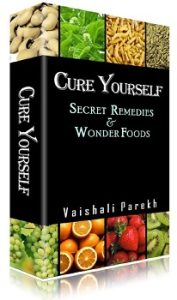
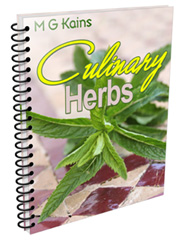


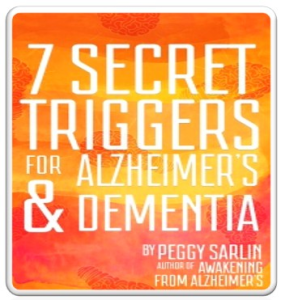



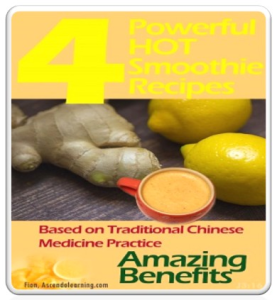

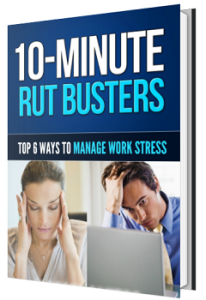


Post Comment